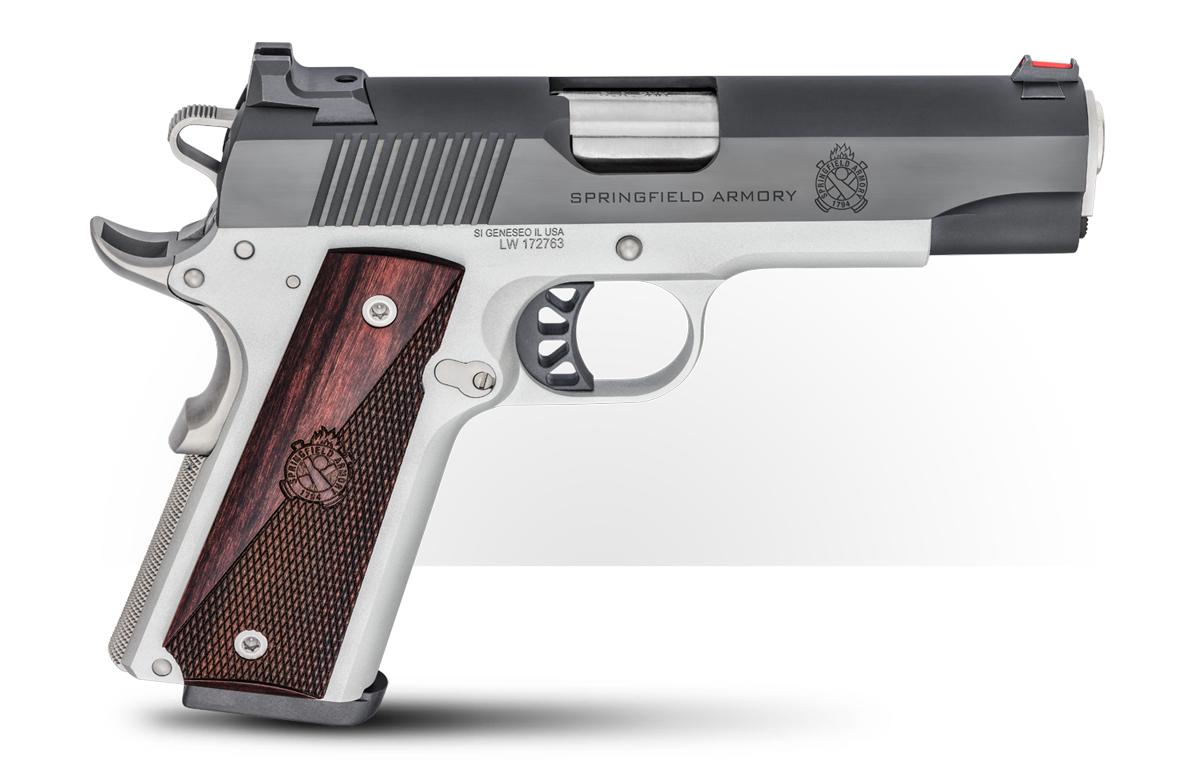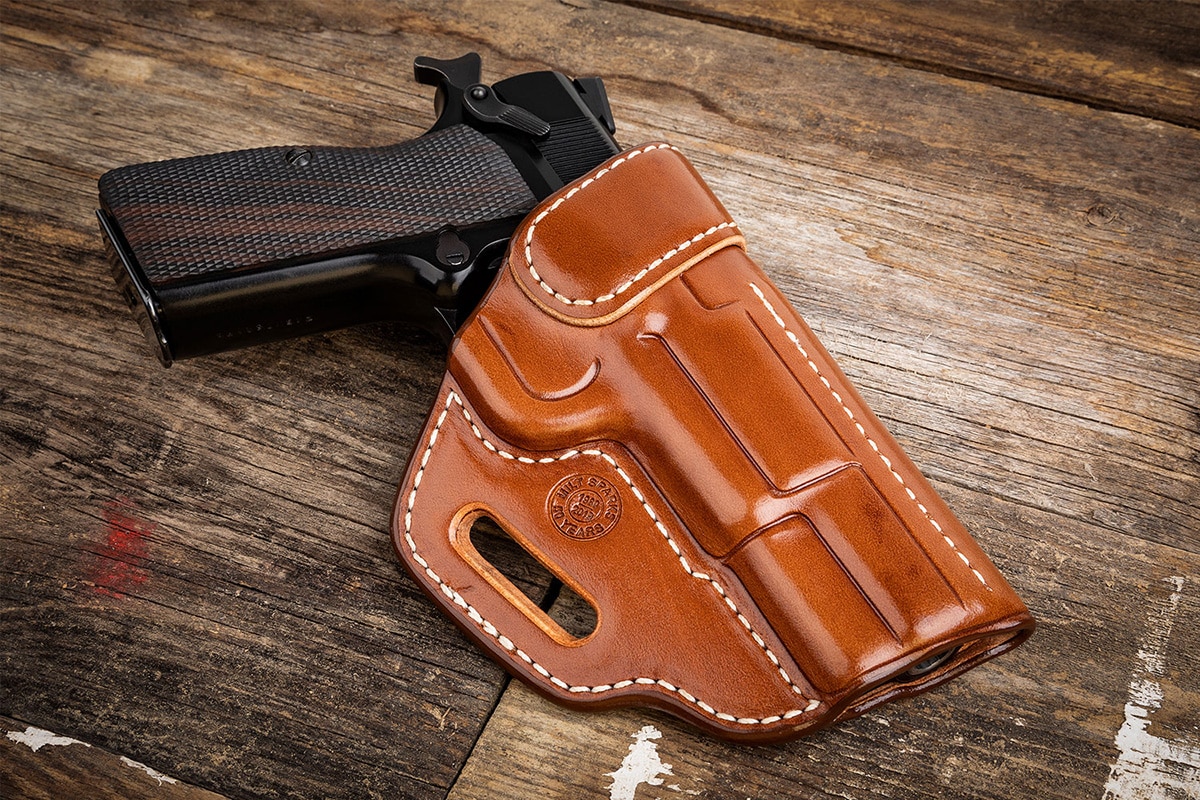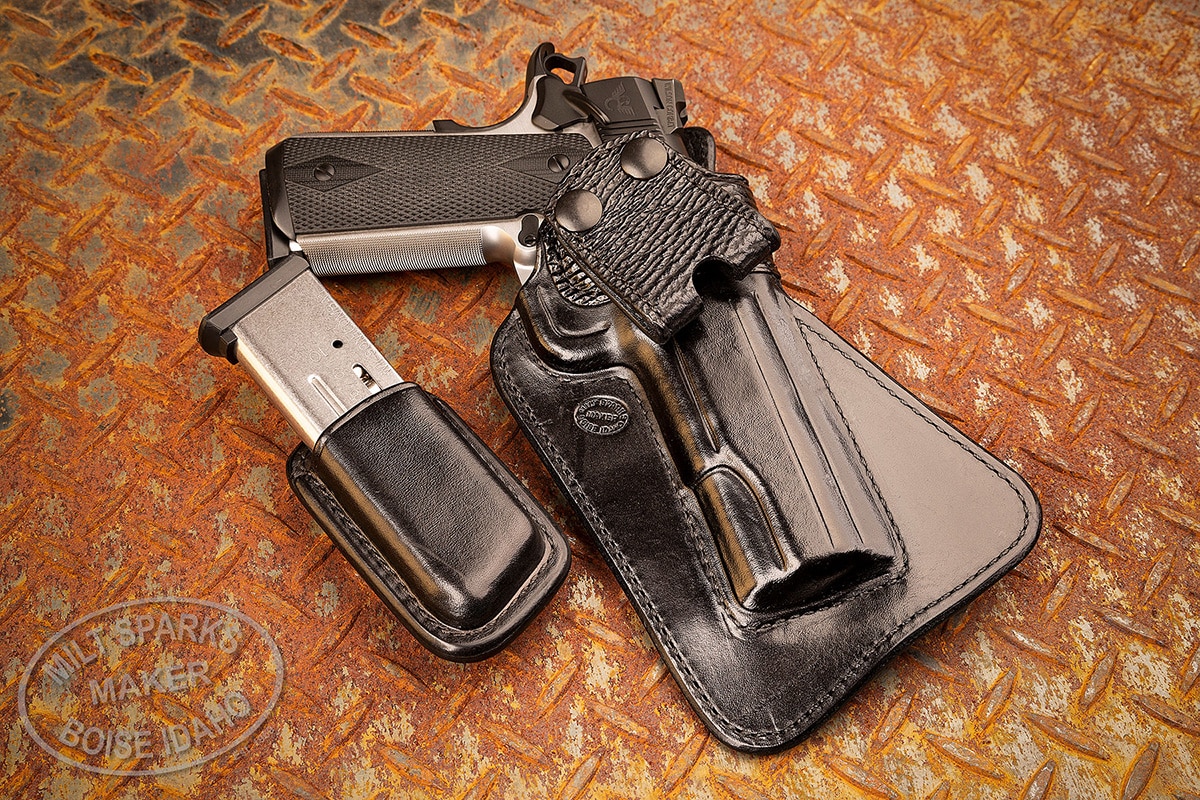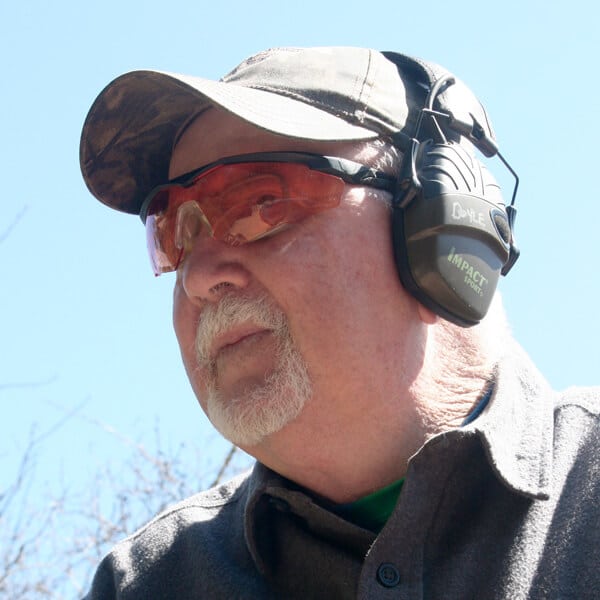An EDC for Every Season:
The Ronin 4.25” 9mm 1911
October 30th, 2023
7 minute read
Choosing the right handgun for everyday carry often requires quite a bit of reflection. Some of the considerations include size, weight, action type and capacity as well as the round it fires. Throughout my career as a law enforcement officer, I didn’t really trouble myself with the various possibilities as the outfit I worked for told me exactly what kind of guns I could carry on my own time.
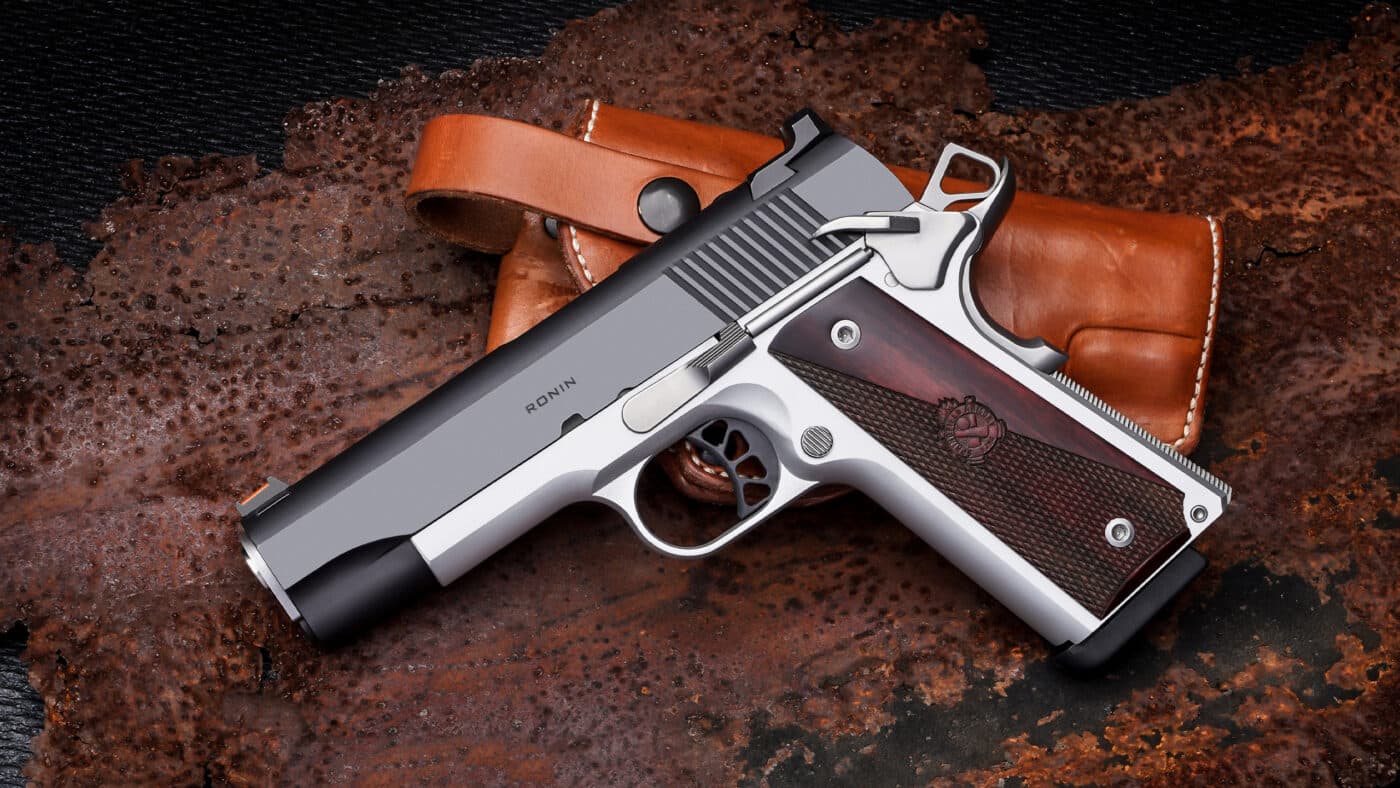
When we made the big switch from revolvers to autos, I often carried my service pistol as I soon discovered it could be easily concealed with the right holster. That small-framed revolver I carried as an off-duty gun was pressed into a different role as a backup to more serious hardware.
Retirement from active law enforcement service opened up a whole new world of possibilities for me as I could now carry any handgun I pleased. I will confess to a bit of experimentation at first, but in the end I have come full circle. I now get by with a pair of compact-size pistols as well as a smaller handgun for travels to non-permissive environments.
Granted, my personal situation may be very different than yours, but with just a little bit of effort I can discreetly conceal a slightly more compact version of a service-size pistol with little effort. It has been my observation that most people can shoot this sort of gun to a higher standard than with a very small subcompact or micro-sized pistol.
I would be remiss if I didn’t mention that I have a few things going for me that enable me to carry a fair-size pistol. I don’t work in an office where business attire is the order of the day, which pretty much contraindicates carrying a gun on the belt.
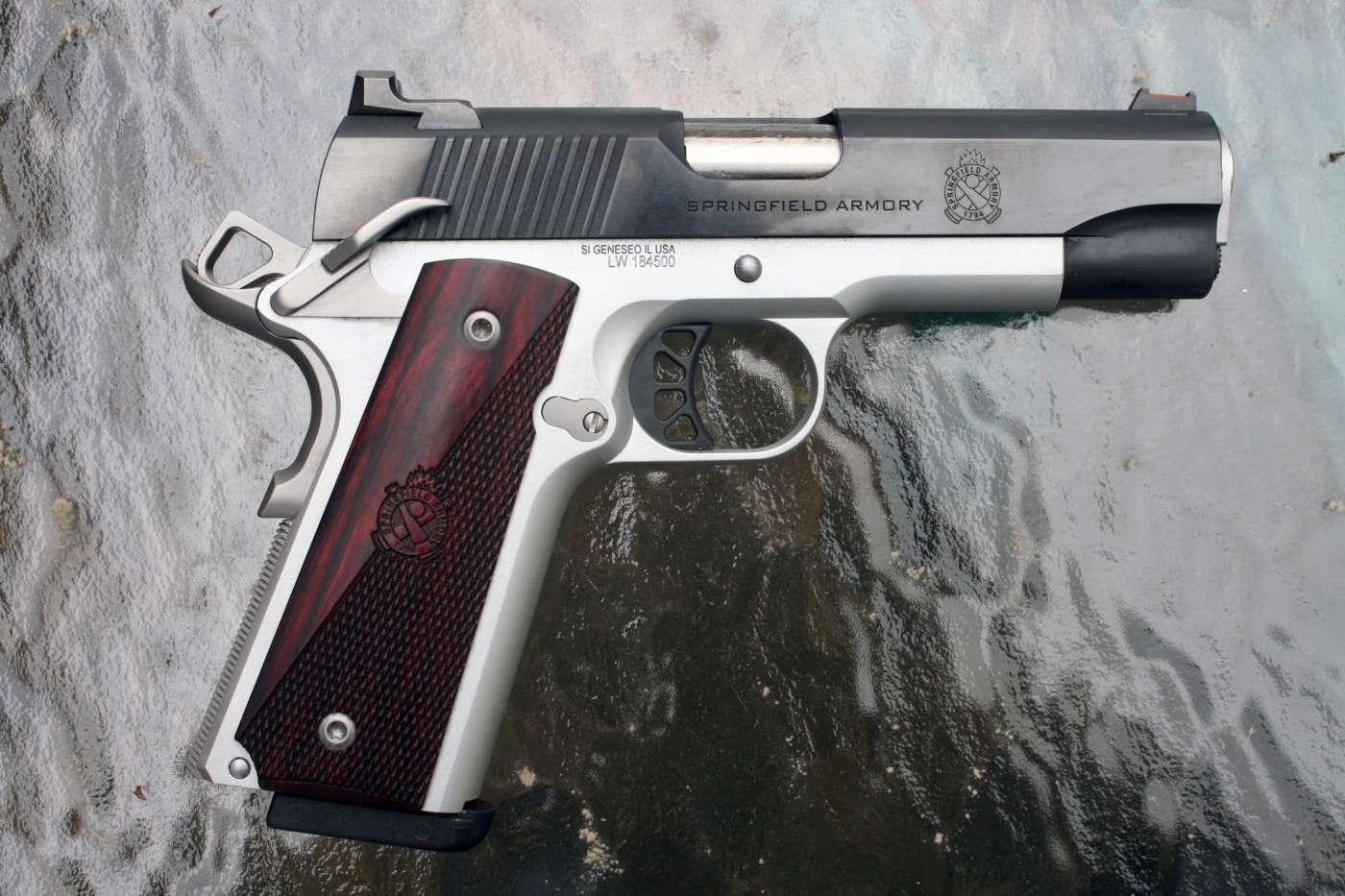
Where I live in the northeastern U.S., an outer garment that effectively hides the handgun is required three seasons of the year. Hot, humid weather can be a challenge in the summer, but an inside-the-waistband (IWB) holster and an untucked shirt keep me under the radar.
I’m certainly no giant of a guy, but at 6’ 1” and a bit north of 200 lbs., it makes it easier for me to hide a gun than a smaller guy or gal. The fact that my everyday attire consists of loose, casual clothing pretty much seals the deal.
A Solution in the Mix
I have long fancied 1911 pistols, and my modest collection contains several different examples of the John Browning classic. Like many shooters, my infatuation with this design stems from the fact that, with just a little bit of training, a 1911 can be shot to very high standard. This is not merely a reflection on my own personal experience but with others I have trained as well.
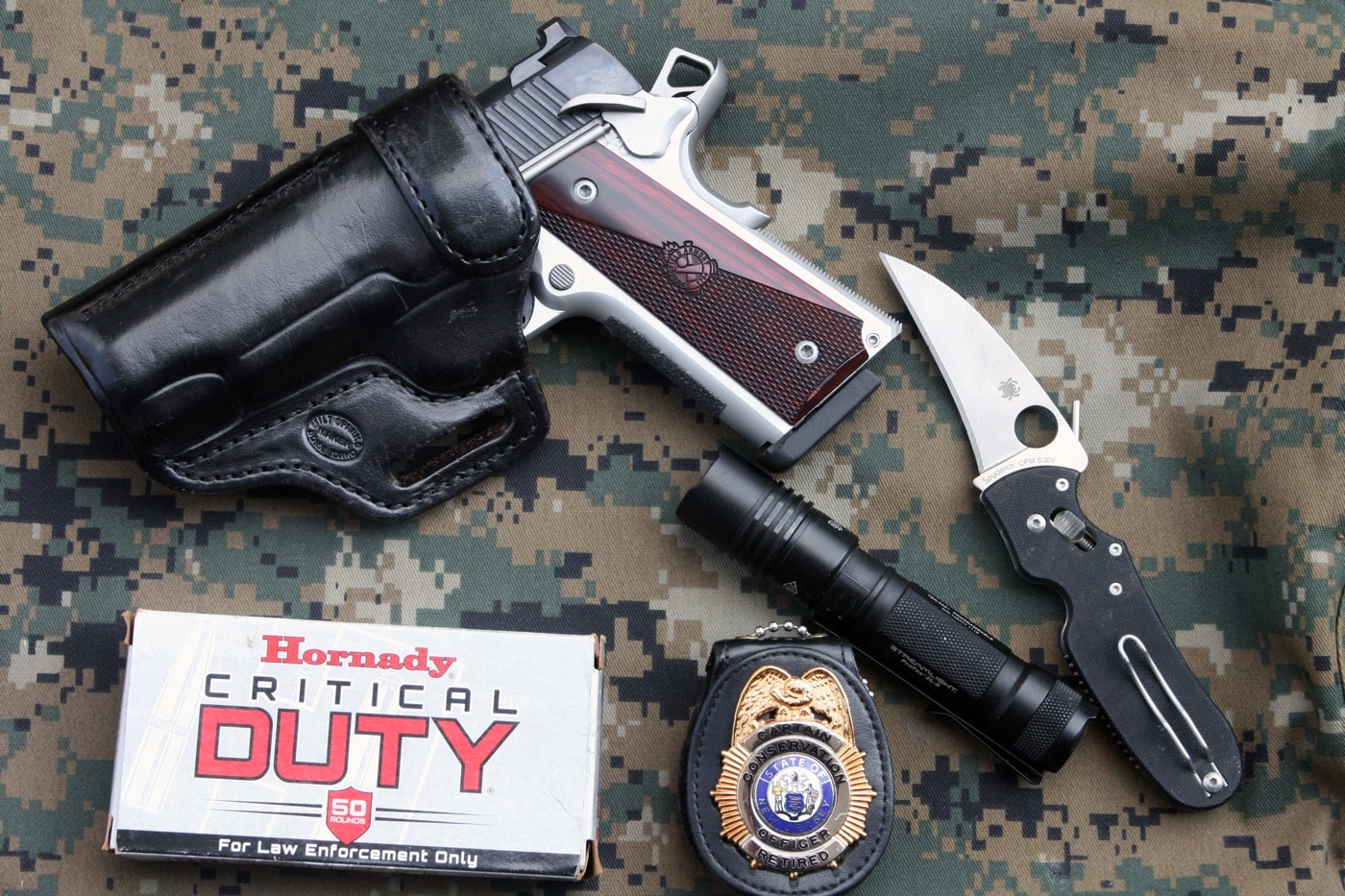
On occasion, I have encountered shooters struggling with other designs and had them try a 1911. In several instances, the improvements in both skill and confidence have been dramatic. It should hardly surprise that a pistol with a relatively light, short trigger action is easier to shoot well than other systems.
For many years, one of my favorite pistols has been a compact-size 1911 in .45 ACP. This “Commander” size 1911 features a slide and barrel that are ¾” shorter than a full-size 5” pistol, which makes it just a shade easier to hide. Mine was built on an aluminum alloy frame which represents a significant weight savings over a steel-frame pistol, especially when lugging it around over a long day.
One thing I began to take note of was that extended practice sessions when firing full-power .45 ACP loads were no longer fun. While I came to appreciate my pistol’s relatively light weight, perhaps something that didn’t beat up my shooting hand might be a good bet.
One day, I was perusing the 1911 offerings from Springfield Armory and noted they had the Ronin 4.25” chambered for 9mm, complete with an aluminum frame. Might we be on to something here? I ordered the pistol to see if it might fill a vital niche in my battery of defensive pistols.
All the Right Stuff
Without question, the Ronin line from Springfield Armory packs an awful lot of value in a reasonably priced pistol. It is indeed a very refined “old school” design with classic features and a traditional G.I.-style locking system and bushing. The forged carbon steel slide of the Ronin wears a salt blue finish while the frame has a satin Cerakote aluminum coating. I have long been a fan of two-tone slides on 1911s, but the Ronin is much more than just a pretty face. The 4.25” match grade barrel is rendered from forged stainless steel complete with a fully supported ramp.
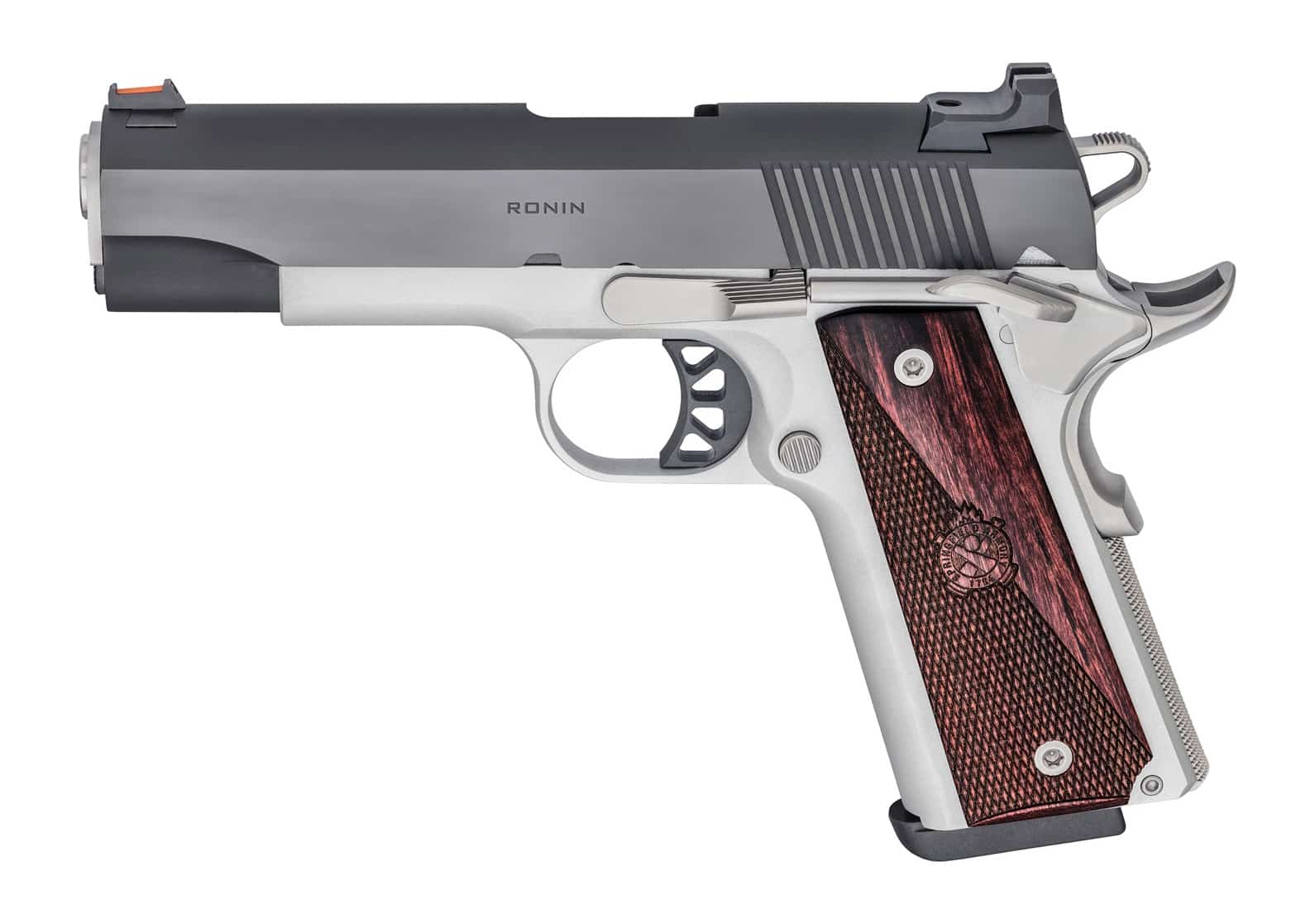
I am particularly fond of the sights on the Ronin, which feature a red fiber optic front mated to a tactical rack rear. For me, the bold fiber optic front sight proved far easier to pick up at speed than just about all other systems. Attractive, laminated wood grips with Springfield’s crossed cannon logo are standard.
At 31 ounces empty, the Ronin 4.25” is a tad heavier than a like-size polymer frame pistol but not so much that I noticed. Some potential users may lament the fact that with a 9+1 total capacity, it lacks the same payload as one of the popular polymer pistols. Personally, I don’t feel this to be a huge disadvantage. There are indeed smaller pistols with greater total capacity, but the fact that I can shoot the Ronin to a higher standard more than levels the playing field.
Compact Pistols Rock
For most of us, any pistol we might select for everyday concealed carry is a compromise. Unless you spend most all of your time on a ranch, farm or well off-the-beaten path, a big heavy handgun is not especially practical. On the other end of the scale, a really small pocket pistol has both benefits and compromises. Yes, they are indeed very handy and a joy to carry, but they can be more difficult to shoot well. Also, some of them are not chambered in legitimate service cartridges — something that is a must for me in my EDC.
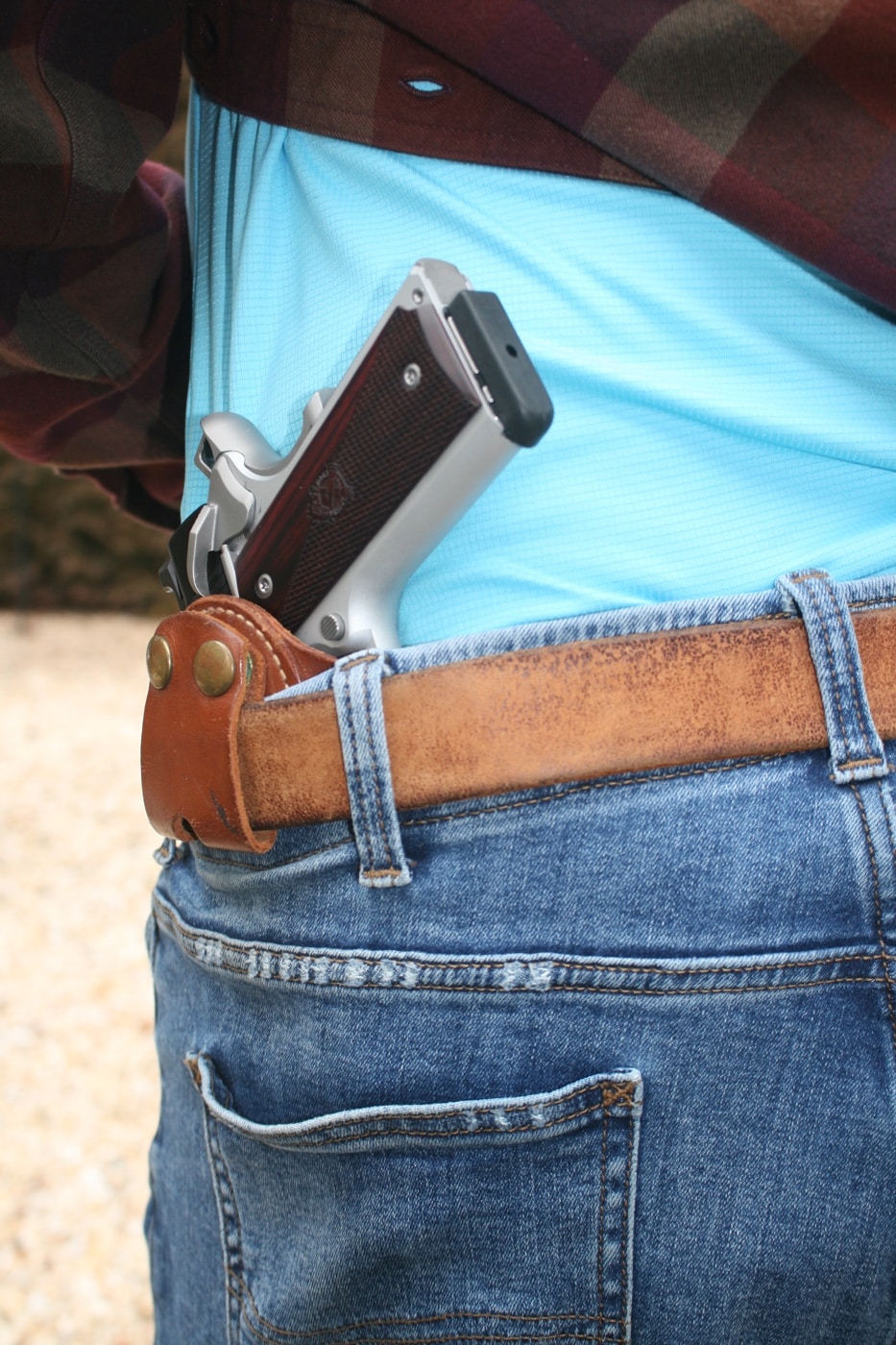
The reason I continue to favor a “compact” size pistol over a subcompact is the fact I can get my entire medium-size hand around the grip frame. On the Ronin 4.25”, the grip frame is the same as a full-size 1911, and the slightly abbreviated slide still provides a very generous sighting plane. For me, this all adds up to better hit potential.
My preferred holster for the Ronin 4.25” is an outside-the-waistband (OWB) Milt Sparks 55BN with a forward cant. The muzzle is canted slightly forward while the grip is angled to the rear. The holstered pistol rides tight to the body to aid concealment. Draw times with this holster are pretty snappy and I position it at 10 o’clock (left-hand shooter) to keep it off my perpetually sore hip. For those occasions when IWB carry is required, a Milt Sparks Executives Companion is pressed into service.
Conclusion
The debate of .45 ACP versus 9mm may have subsided ever so slightly in recent years, but the cartridge your EDC pistol fires will always be a consideration. Today, there are a number of very capable 9mm loads out there for the taking, and I personally doubt if there is a dime’s worth of difference in real-world performance between them and a .45 ACP. What I do know is that when shooting at speed, I shoot with a greater degree of control and accuracy with the 9mm.
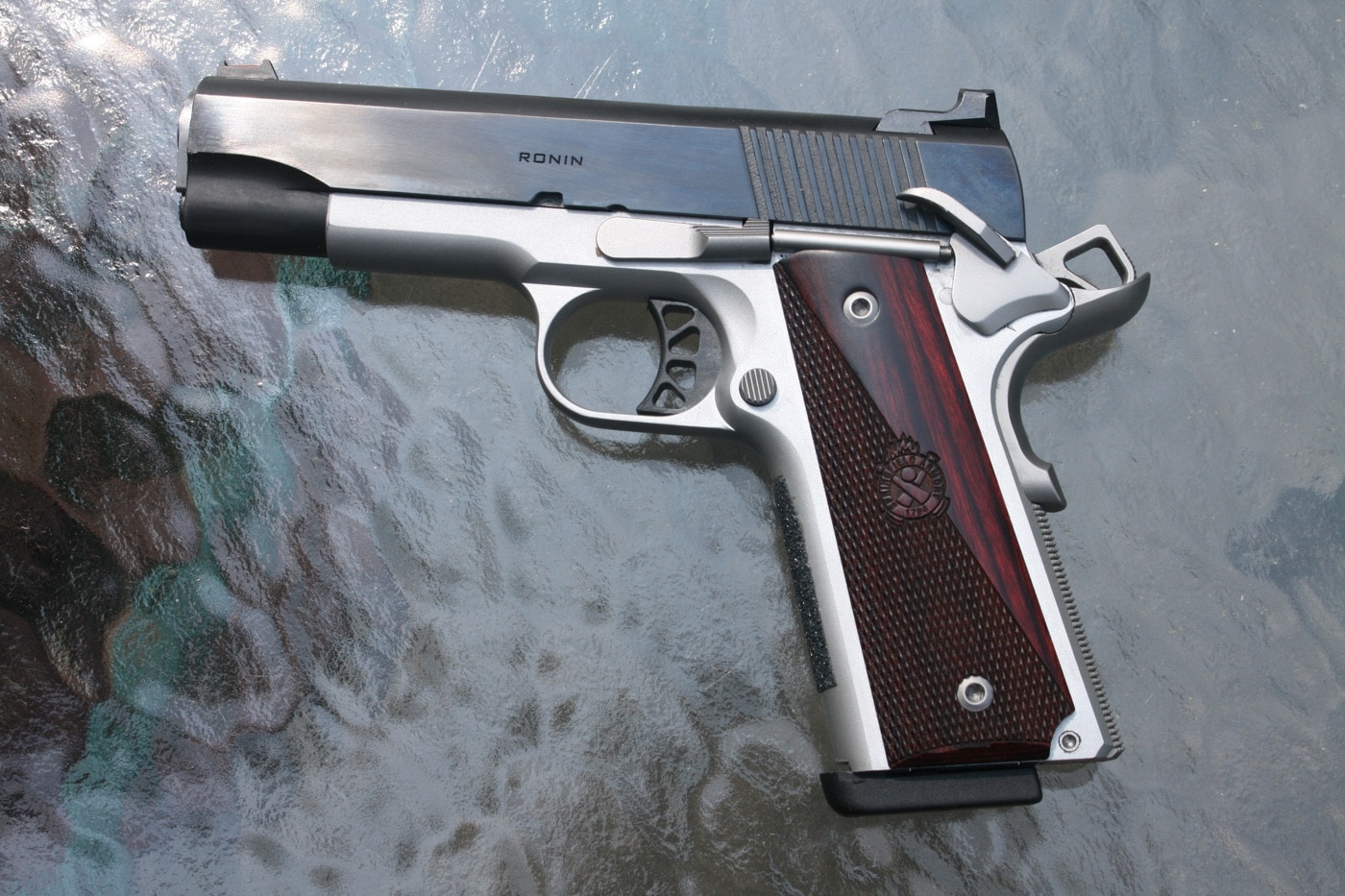
By going with a compact pistol like this Ronin, I do have a slightly greater challenge in keeping it out of view. But, I feel the trade-off for slightly better performance is worth it. While your lifestyle and needs may not allow you the same latitude, I find carrying a compact pistol such as the Ronin 4.25” works for me the great majority of the time I leave my house. You too might agree that a mid-size lightweight, yet very capable pistol is just the right choice.
Editor’s Note: Please be sure to check out The Armory Life Forum, where you can comment about our daily articles, as well as just talk guns and gear. Click the “Go To Forum Thread” link below to jump in and discuss this article and much more!
Join the Discussion
Featured in this article
Continue Reading
Did you enjoy this article?

 288
288




